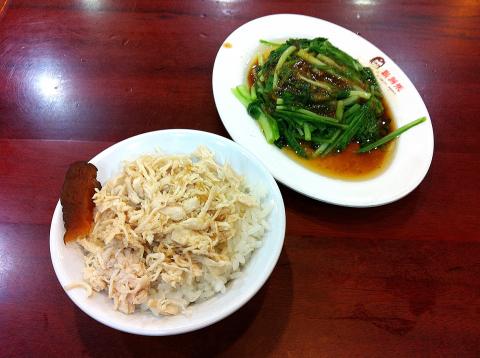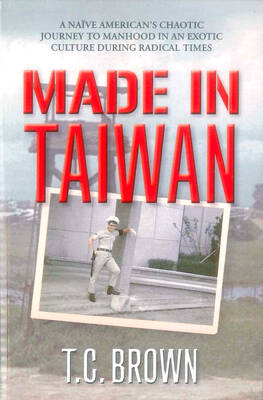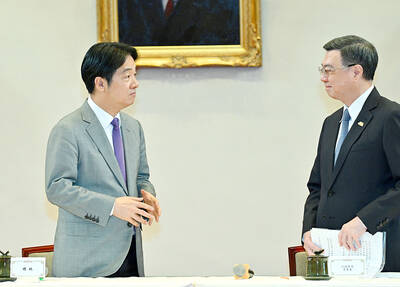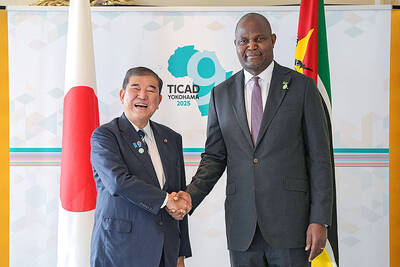If you like traditional Taiwanese food, you’ve probably heard of Formosa Chang (鬍鬚張). With more than 30 locations across greater Taipei, the restaurant chain has been in business since the late 1980s, and is one of the more successful ventures that have brought street food staples into the realm of mass production.
Part of that success has been the result of shrewd branding. Several years ago, Formosa Chang won cachet among Taiwanese hipsters when it teamed up with Pizza Cut Five, a boutique T-shirt design company, to create a series of T-shirts bearing the restaurant’s iconic logo, the bearded face of restaurant founder Chang Yan-chuan (張炎泉). The T-shirts, which featured Chang’s head refashioned in a variety of pop art styles, were a hit. To this day, black T-shirts emblazoned with the words “Formosa Chang Cut Five” in hot pink are the official staff uniform.
Fashion aside, hardcore foodies and penny-pinchers have reason to turn their noses up at Formosa Chang, which charges NT$30 for a small bowl of its specialty, braised pork rice (known in Mandarin as luroufan, 魯肉飯). You can get the same for NT$25 at a popular hole-in-the wall joint, Chinfeng Braised Pork Rice (金鋒魯肉飯), see page 14 of last Friday’s edition of the Taipei Times), and perhaps even cheaper at one of the countless mom-and-pop shops across the city serving similar fare.

Photo: David Chen, Taipei Times
But still, Formosa Chang’s braised pork rice is not bad at all. The restaurant’s version of this simple dish — bits of fatty pork stewed in sweet soy sauce and ladled on top of a bowl of rice — tastes fresh and homemade, and even won a voter’s choice award at Taipei City’s Traditional Food Carnival (台北市傳統美食嘉年華會) several years ago.
And here’s one plus to Formosa Chang’s chain restaurant approach: The food is consistent. You know what you’re going to get, and you know how it’s going to taste. In this light, a meal at Formosa Chang makes for a more nourishing alternative to a Big Mac and fries combo. A large bowl of braised pork rice, which comes with a slice of pickled ginger, costs NT$59. Have that with a side of boiled greens, (燙青菜, NT$40) — the restaurant serves whatever is in season — and a tea egg (NT$15), and you have a decent meal for just over NT$100.
Another simple yet classic dish on offer is chicken on rice (雞肉飯, NT$30 for a small bowl, NT$59 for a large bowl). You get shredded slices of boiled chicken topped with a spoonful of light gravy on rice. Another Taiwanese standard, pork ribs and bitter gourd soup (苦瓜排骨湯, NT$65), goes well with either rice dishes. If pig intestines suit your fancy, get the “four gods soup” (四神湯, NT$50), touted by the restaurant as a popular choice.
I’m not taken with all of Formosa Chang’s recommendations, which are trumpeted on stock promotional posters hanging on the walls of its restaurants. The roast salted pork (石板鹹豬肉, NT$60) is not nearly as appetizing as the photo suggests — in fact, it’s an utter disappointment.
For those on the go, Formosa Chang also sells lunchboxes, which are good value. Both the braised pork and chicken on rice lunchboxes are NT$79 and come with several veggie side dishes, a piece of tofu and a tea egg. The sliced beef and onions lunchbox (霜降牛丼便當, NT$79) is a nice and not-so-greasy option.
Formosa Chang’s atmosphere caters to the romantic idea of a traditional Taiwanese eatery, with wooden tables and stools. Relaxing jazz music is piped softly in the background, a la a Starbucks, and the waitstaff is clearly trained to be polite and efficient. A Formosa Chang branch might lack the down-home feel of your favorite street stand, but it’s a safe, reliable option if you’re in a hurry. And it beats McDonald’s any day.

By 1971, heroin and opium use among US troops fighting in Vietnam had reached epidemic proportions, with 42 percent of American servicemen saying they’d tried opioids at least once and around 20 percent claiming some level of addiction, according to the US Department of Defense. Though heroin use by US troops has been little discussed in the context of Taiwan, these and other drugs — produced in part by rogue Chinese Nationalist Party (KMT) armies then in Thailand and Myanmar — also spread to US military bases on the island, where soldiers were often stoned or high. American military policeman

Under pressure, President William Lai (賴清德) has enacted his first cabinet reshuffle. Whether it will be enough to staunch the bleeding remains to be seen. Cabinet members in the Executive Yuan almost always end up as sacrificial lambs, especially those appointed early in a president’s term. When presidents are under pressure, the cabinet is reshuffled. This is not unique to any party or president; this is the custom. This is the case in many democracies, especially parliamentary ones. In Taiwan, constitutionally the president presides over the heads of the five branches of government, each of which is confusingly translated as “president”

An attempt to promote friendship between Japan and countries in Africa has transformed into a xenophobic row about migration after inaccurate media reports suggested the scheme would lead to a “flood of immigrants.” The controversy erupted after the Japan International Cooperation Agency, or JICA, said this month it had designated four Japanese cities as “Africa hometowns” for partner countries in Africa: Mozambique, Nigeria, Ghana and Tanzania. The program, announced at the end of an international conference on African development in Yokohama, will involve personnel exchanges and events to foster closer ties between the four regional Japanese cities — Imabari, Kisarazu, Sanjo and

Sept. 1 to Sept. 7 In 1899, Kozaburo Hirai became the first documented Japanese to wed a Taiwanese under colonial rule. The soldier was partly motivated by the government’s policy of assimilating the Taiwanese population through intermarriage. While his friends and family disapproved and even mocked him, the marriage endured. By 1930, when his story appeared in Tales of Virtuous Deeds in Taiwan, Hirai had settled in his wife’s rural Changhua hometown, farming the land and integrating into local society. Similarly, Aiko Fujii, who married into the prominent Wufeng Lin Family (霧峰林家) in 1927, quickly learned Hoklo (commonly known as Taiwanese) and